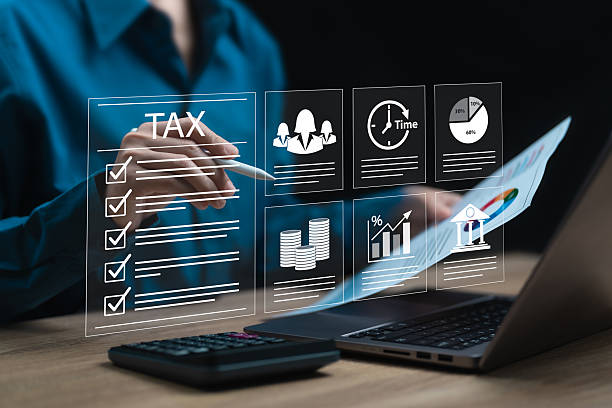What is On-Page SEO and why is it important?
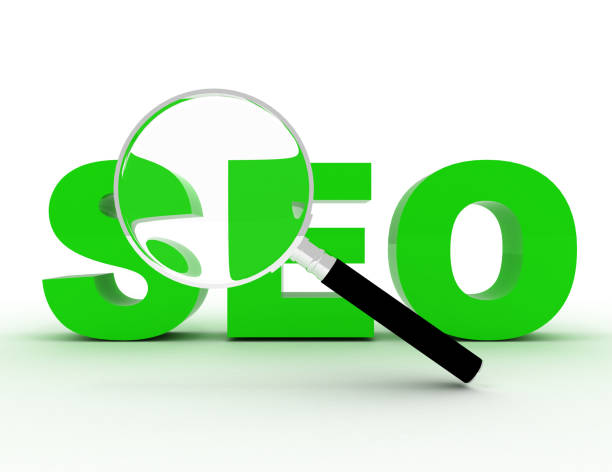
What is On-Page SEO and why is it important?
On-Page SEO, also known as internal SEO, refers to a set of techniques and actions you perform within your website to improve its ranking in search engines like Google. These actions include content optimization, proper keyword usage, site structure improvement, and HTML tag optimization. The importance of On-Page SEO lies in helping search engines better understand your site’s content and display it to relevant users. By implementing On-Page SEO, you can increase your site’s organic traffic, improve conversion rates, and ultimately achieve your business goals. In other words, On-Page SEO is a smart investment for the long-term growth of your online business. Optimizing On-Page SEO helps your website rank higher in search engines, ultimately leading to increased website visits and traffic.
Using On-Page SEO is an essential step for website optimization.
On-Page SEO allows website owners to optimize their website content to attract more visits from search engines.
Additionally, implementing On-Page SEO helps users quickly and easily find the information they need.
Therefore, optimizing On-Page SEO is crucial for every website.
Is your current e-commerce website design not generating the expected sales?
Rasaweb specializes in professional e-commerce website design!
✅ An attractive and user-friendly website with the goal of increasing sales
✅ High speed and security for an ideal shopping experience⚡ Get a free consultation for online store design with Rasaweb!
Keyword Research: The First Step in On-Page SEO
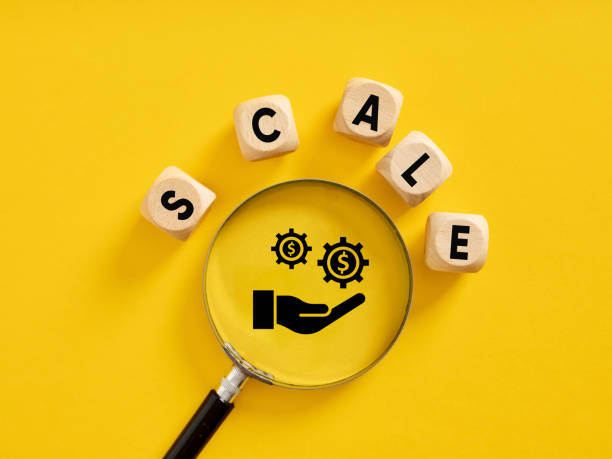
Keyword Research: The First Step in On-Page SEO
Keyword research is the cornerstone of any successful On-Page SEO strategy. First and foremost, you need to understand what words your target audience uses to search on Google. For this, you can use various tools such as Ahrefs, Ubersuggest, and Google Keyword Planner. Using these tools, you can find keywords relevant to your business, check their search volume, and assess the level of competition. Choose keywords that have a suitable search volume and where the competition is not too high. After selecting keywords, you should use them naturally in your content. The goal is to show search engines that your content is relevant to the chosen keywords. However, be careful not to overuse keywords, as this can lead to your site being penalized by Google. In summary, keyword research is a vital process in On-Page SEO that helps you optimize your content for your target audience and improve your site’s ranking on Google.
By using appropriate keywords, your website will be more visible in search engines.
This can lead to increased website traffic, more customers, and increased sales.
Additionally, keyword research helps you optimize your content for your target audience.
By using suitable keywords, you can make your content more attractive and useful for your target audience.
Consequently, keyword research is one of the most important steps in On-Page SEO.
Optimizing Page Title (Title Tag) and Meta Description
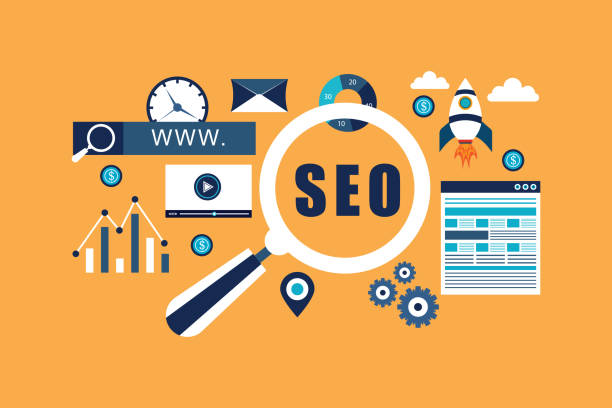
Optimizing Page Title (Title Tag) and Meta Description
The page title and meta description are the first things users see in search results. These two elements play a crucial role in attracting users to your site. The page title should be short, engaging, and relevant to the page’s content. It should also include the main keyword of the page. The meta description should be a summary of the page’s content and encourage users to click on your site’s link. Using relevant keywords and attractive phrases in the meta description can increase your site’s click-through rate (CTR). Remember that the page title and meta description should be unique for each page of your site. Avoid duplicating these two elements across different pages of your site. Optimizing the page title and meta description is an important step in On-Page SEO that can help increase traffic and improve your site’s ranking on Google.
In fact, the title tag and meta description tag are small parts of HTML code located in the head section of a website.
The title tag specifies the page’s title and is displayed in the browser’s title bar.
The meta description tag provides a short summary of the page’s content and is displayed below the page title in search results.
Both the title tag and meta description tag are very important for SEO, as they help search engines understand what your page is about.
Furthermore, the title tag and meta description tag can influence your click-through rate (CTR), which is an important ranking factor.
| Element | Description | Best Practices |
|---|---|---|
| Title Tag | The page title displayed in search results and the browser tab. | Short (less than 60 characters), engaging, includes the main keyword. |
| Meta Description | A brief summary of the page content displayed below the title in search results. | Engaging, includes relevant keywords, encourages clicks, less than 160 characters. |
Content Optimization: The King of On-Page SEO
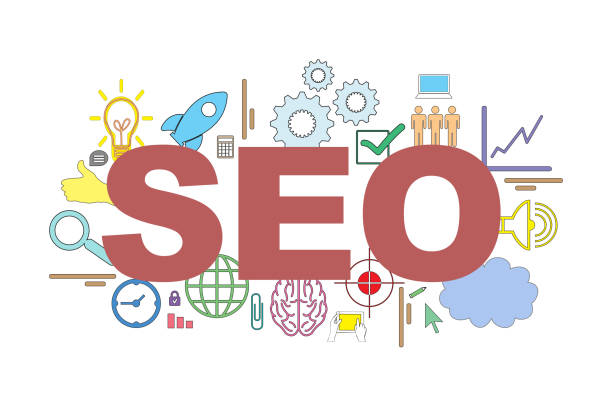
Content Optimization: The King of On-Page SEO
High-quality and relevant content is the beating heart of every website. For your content to achieve a high ranking on Google, it must be valuable to your target audience. Regularly update your content and use relevant keywords naturally. Avoid creating duplicate content, as this can lead to your site being penalized by Google. Use high-quality images and videos to make your content more engaging. Structure your content in a way that makes it easy to read. Use headings, subheadings, bullet points, and lists to organize your content. Content optimization is an ongoing process that requires patience. By producing high-quality and relevant content, you can increase your site’s organic traffic and ultimately achieve your business goals. This process is considered one of the most important parts of On-Page SEO.
High-quality and engaging content is one of the most important factors in SEO and content marketing.
Good content can help you improve your ranking in search engines, attract more traffic to your website, and engage your audience.
To create high-quality and engaging content, you should pay attention to the following:
- Research and find relevant keywords.
- Create an attractive and catchy title.
- Structure your content well.
- Use images and videos.
- Keep your content updated.
Are you losing potential customers due to an unprofessional website? Rasaweb is your answer! With our specialized corporate website design services:
✅ Enhance your business’s credibility and standing
✅ Experience attracting more targeted customers
⚡ Act now to receive a free consultation!
Optimizing Images for On-Page SEO

Optimizing Images for On-Page SEO
Images play an important role in the visual appeal and user experience of your website. But images can also help your site’s SEO. To do this, you need to optimize your images correctly. Use descriptive file names for your images. For example, instead of a name like IMG_1234.jpg, use a name like “image-optimization-for-seo.jpg.” Use the alt tag to describe your images. The alt tag helps search engines understand the content of your images. Reduce the file size of your images to increase the loading speed of your site’s pages. Use appropriate formats for your images. JPEG format is suitable for images with many colors, and PNG format is suitable for images with fewer colors. By optimizing your images, you can both improve your site’s user experience and increase your site’s ranking on Google. Improving site ranking on Google is an important goal in the On-Page SEO process.
Image optimization is an important part of On-Page SEO that is often overlooked.
Optimized images can help improve page load speed, increase user engagement, and enhance your website’s overall ranking in search engines.
Here are some tips for optimizing images for SEO:
- Choosing the right format: JPEG, PNG, and WebP are the most common image formats for the web.
JPEG is suitable for images with many colors, while PNG is better for images with graphics and text.
WebP is a newer format that offers better compression. - Reducing file size: Large images can slow down page load speed.
To reduce the file size of your images, you can use image compression tools. - Using appropriate file names: Name your image files with keywords relevant to the page’s content.
- Adding Alt Text: Alt text is a textual description of an image that is displayed if the image fails to load.
Search engines also use alt text to understand the image’s content. - Using image title and description: Image title and description can provide more information about the image and help improve SEO.
Appropriate URL Structure and On-Page SEO

Appropriate URL Structure and On-Page SEO
Your site’s URL structure should be simple, logical, and understandable.
Avoid using long and complex URLs.
Short and descriptive URLs help search engines better understand your page’s content.
Use relevant keywords in your URLs.
Use hyphens (-) instead of underscores (_) to separate words in the URL.
Try to keep your URLs consistent and avoid changing them.
Changing URLs can lead to a loss of your site’s ranking on Google.
If you are forced to change a URL, use a 301 redirect to transfer users and search engines to the new URL.
Following these tips can help improve your site’s On-Page SEO.
Do not forget that On-Page SEO is an important principle in online marketing.
An appropriate URL structure plays a significant role in SEO.
A good URL should be short, descriptive, and include relevant keywords.
This helps search engines understand the page’s topic and improve its ranking.
Here are some tips for creating an appropriate URL structure:
- Use relevant keywords.
- Keep the URL short.
- Use hyphens (-) to separate words.
- Use lowercase letters.
- Avoid numbers and special characters.
- Keep the URL consistent.
Internal Linking: An Effective Strategy in On-Page SEO
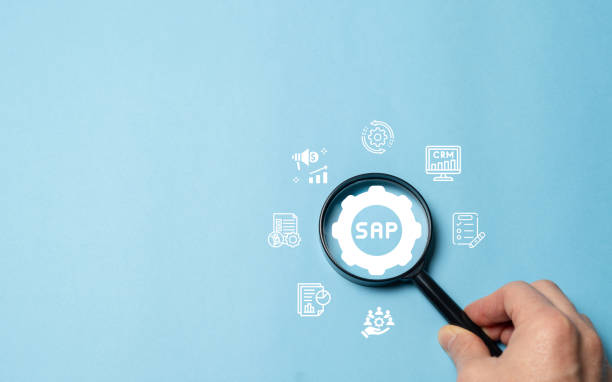
Internal Linking: An Effective Strategy in On-Page SEO
Internal linking means creating links between different pages of your site.
This helps search engines better understand your site’s structure and access more important pages on your site.
Internal linking can help increase traffic and improve the ranking of various pages on your site.
When internal linking, use relevant and descriptive anchor texts.
Anchor text is the clickable text that links to another page.
Avoid linking to irrelevant pages.
Internal linking should be done naturally and logically.
Excessive use of internal links can have a negative effect.
Internal linking is an effective strategy in On-Page SEO that can help improve your site’s performance.
Proper use of links is an important part of On-Page SEO and leads to improved site ranking.
Internal linking is one of the most important aspects of On-Page SEO that is often overlooked.
Internal links help search engines understand your website’s structure, identify important pages, and distribute the SEO value of different pages.
A strong internal linking strategy can help improve your website’s ranking in search results and attract more organic traffic.
| Goal | Description | Best Practices |
|---|---|---|
| Guiding Search Bots | Helps search engines find the more important pages of the site. | Linking from high-authority pages to target pages. |
| Distributing SEO Value | Transferring “PageRank” from one page to another. | Creating relevant and valuable links. |
| Improving User Experience | Helps users easily navigate the site and find the information they need. | Creating clear and relevant links in the text. |
Website Speed Optimization: An Important Factor in On-Page SEO
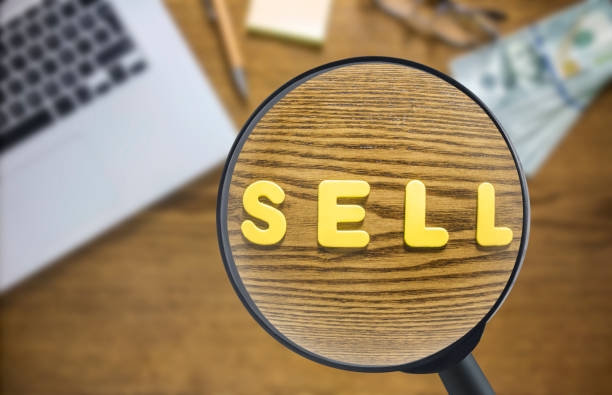
Website Speed Optimization: An Important Factor in On-Page SEO
Website loading speed is one of the important factors in Google’s ranking.
Users expect websites to load quickly.
If your site is slow, users will quickly leave it, which can lead to a drop in your site’s ranking on Google.
To improve your site’s speed, you can use various tools such as Google PageSpeed Insights.
This tool helps you identify your site’s speed issues and find solutions for improvement.
Some solutions for improving site speed include: reducing image sizes, using a CDN, enabling caching, and optimizing code.
By improving your site’s speed, you can both enhance your site’s user experience and increase your site’s ranking on Google.
Google pays special attention to site speed for improving On-Page SEO.
Website speed is an important factor in user experience and SEO.
Faster websites offer a better user experience and are more likely to rank higher in search results.
Here are some tips for optimizing website speed:
- Optimizing images: Large images can slow down page loading speed.
Use images with appropriate formats and small sizes. - Enabling browser caching: Browser caching allows the user’s browser to store your website’s files on their computer.
This makes your website pages load faster on subsequent visits. - Using a Content Delivery Network (CDN): A CDN is a network of servers that are distributed worldwide.
A CDN helps you deliver your website content faster to users who are located in different geographical regions. - Reducing HTTP requests: Every time a user visits your website, their browser has to send many HTTP requests to load various files on your website.
Reducing the number of HTTP requests can improve page loading speed.
Does your current e-commerce website design lead to losing customers and sales?
Rasaweb, with its modern and user-friendly e-commerce website designs, is your solution!
✅ Significant increase in conversion rates and sales
✅ Creation of strong branding and building customer trust
⚡ Get a free e-commerce website design consultation from Rasaweb!
Website Responsiveness: A Necessity for On-Page SEO

Website Responsiveness: A Necessity for On-Page SEO
Given the increasing use of mobile devices for internet searching, website responsiveness is a necessity for On-Page SEO.
Responsiveness means that your site automatically adapts to the screen size of various devices (such as mobile, tablet, and computer).
Google gives more importance to responsive sites and ranks them higher in search results.
If your site is not responsive, you might lose a lot of traffic.
To check your site’s responsiveness, you can use the Google Mobile-Friendly Test tool.
This tool shows you how your site appears on mobile devices and what issues it has.
Correcting responsiveness issues can help improve your site’s ranking on Google.
By using responsive design, you can optimize your site’s On-Page SEO.
Website responsiveness means that your website automatically adapts to the screen size of various devices (such as smartphones, tablets, and computers).
This allows users to easily use your website on any device.
Responsiveness is an important factor in SEO, as Google ranks responsive websites higher in search results.
Here are some reasons for the importance of website responsiveness:
- User Experience: Responsiveness allows users to easily use your website on any device.
This makes users enjoy your website and makes them more likely to return to it. - SEO: Google ranks responsive websites higher in search results.
This allows your website to receive more traffic from Google. - Cost: Creating a responsive website is usually cheaper than creating two separate websites for desktop and mobile devices.
Using Structured Data (Schema Markup)
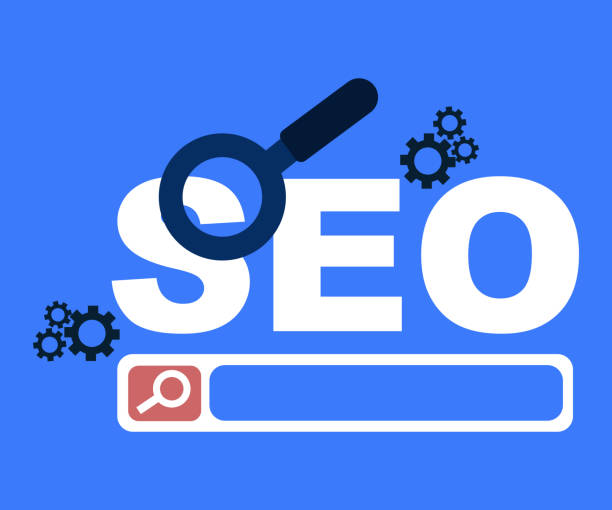
Using Structured Data (Schema Markup)
Structured data, or Schema Markup, are codes that help search engines better understand your site’s content.
By using structured data, you can provide important information such as product name, price, rating, and address to search engines.
This information can be displayed as Rich Snippets in search results and increase your site’s click-through rate (CTR).
Using structured data is an advanced method in On-Page SEO that can help improve your site’s ranking on Google.
To use structured data, you can use the Google Structured Data Markup Helper tool.
This tool helps you create the necessary codes for various pages of your site.
Schema Markup is considered one of the best ways to improve On-Page SEO.
Structured data is code that you can add to your website to provide search engines with more information about your content.
This information can include things like content type (e.g., article, product, event), author, publication date, and more.
When search engines understand this information, they can display richer search results, which can help improve your click-through rate (CTR) and website traffic.
Here are some examples of structured data types:
- Article: Information related to news articles, blogs, and other textual content.
- Product: Information related to products for sale, such as price, availability, and user reviews.
- Event: Information related to events, such as date, time, location, and descriptions.
- Recipe: Information related to cooking recipes, such as ingredients, preparation steps, and images.
- Review: Information related to user reviews and ratings of products, services, and other items.
Frequently Asked Questions
| Question | Answer |
|---|---|
| What is On-Page SEO? | On-Page SEO involves optimizing elements that are directly within your control and on your website. Its goal is to help search engines better understand the page’s content and improve its ranking. |
| Why is On-Page SEO important? | On-Page SEO provides clear signals to search engines about the page’s content, improves user experience, and increases the chances of attracting organic traffic. |
| What are the most important On-Page SEO factors? | Keywords, Title Tag, Meta Description, URL structure, quality content, image optimization, and internal links are among the most important factors. |
| What is the role of the Title Tag in On-Page SEO? | The title tag is one of the most important signals for search engines and users, specifying the main topic of the page. It should include the main keyword and be engaging. |
| How important is the Meta Description? | The meta description does not directly affect ranking, but by encouraging users to click, it can improve the click-through rate (CTR). |
| How to optimize images for On-Page SEO? | By using descriptive file names, appropriate Alt Text containing keywords, compression to reduce size, and correct dimensions. |
| What is the impact of Internal Links on SEO? | Internal links help search engines discover and index site pages, distribute authority (PageRank) throughout the site, and improve user navigation. |
| Is page loading speed an On-Page SEO factor? | Yes, page loading speed is a critical factor in On-Page SEO and user experience. Slower pages can lead to higher bounce rates and lower rankings. |
| What are the characteristics of quality content for On-Page SEO? | Quality content should be comprehensive, unique, relevant, trustworthy, readable, and fully answer users’ needs and questions. |
| How can keywords be used in content? | Keywords should be used naturally in the title, subheadings, first paragraph, body text, and image alt text. Avoid keyword stuffing. |
And other services of Rasaweb Advertising Agency in the field of advertising
- Smart SEO: A dedicated service for improving SEO ranking based on marketing automation.
- Smart UI/UX: Designed for businesses looking to increase site traffic through precise audience targeting.
- Smart Data Analysis: Transform customer acquisition with the help of custom programming.
- Smart Custom Software: Transform increased site traffic with the help of smart data analysis.
- Smart SEO: An effective tool for campaign management with the help of Google Ads management.
And over hundreds of other services in the field of online advertising, advertising consultation, and organizational solutions
Online Advertising | Advertising Strategy | Advertorials
Sources
On-Page SEO Guide
On-Page SEO Training
On-Page SEO
What is On-Page SEO
? For your business to leap forward in the digital world, Rasaweb Afarin is your strategic partner. We pave your path to online success by providing comprehensive digital marketing services, including SEO, professional social media management, and multilingual website design. Join Rasaweb Afarin and make your online presence stronger than ever.
📍 Tehran, Mirdamad Street, next to Bank Markazi, Southern Kazeroon Alley, Ramin Alley, No. 6

